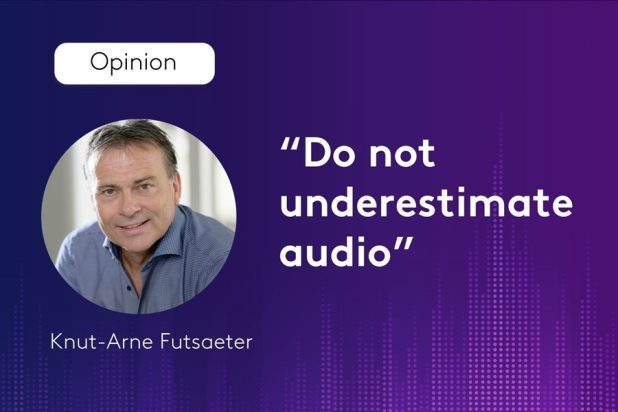Knut-Arne Futsæter, Research Director at Kantar Media explores the challenges and opportunities that the changing listening landscape is bringing in Norway and beyond
How the changing audio landscape unlocks new opportunities for audiences, advertisers and broadcasters

Knut-Arne Futsæter, Research Director at Kantar Media talked about changing listening habits and radio audience measurement at the Norwegian Local Radio Association’s national conference. Here, Knut-Arne explores the challenges and opportunities that the changing listening landscape is bringing in Norway and beyond.
The audio landscape is changing
According to our research, reach for podcasts in Norway hit 20% in 2023, leading to a total of 65% of people listening to radio or podcasts daily. More and more individuals are also listening to the radio via the internet. In 2023, the daily reach was 11% and, overall, the time spent on audio media increased by 12 minutes from 2022 to 2023.
These new formats are attracting different audiences. While 84% of audio consumption among those over 50 is radio, only 16% of audio consumption is radio among 18-29 year-olds. Among younger listeners, 16% are listening to podcasts, compared with only 5% among those over 50.
According to Kantar 24Timer data, audio consumption among 18-29 year-olds increased by 29% in 2023. On top of being generally younger, podcast listeners also tend to be more educated and to live in urban areas.
Further, according to our latest TGI Global Quick View survey of online consumers in 37 markets – only Sweden and Indonesia have a higher adoption of podcast listening.
New listening behaviours
While radio is often a shared experience, listening to a podcast is an individual one. Indeed, with an ever-increasing supply of radio channels and podcasts, both nationally and internationally, and increased use of headsets, audio content will more and more be consumed based on personal preferences.
The individual experience contrasts from the shared one that radio listeners used to have 30 years ago during which the whole family listened to the national news in the morning, were entertained by Norwegian favourite Nitimen, and listened to the same radio channels in the car when going on trips.
The listening experience is also becoming “more global” with 7% of Norwegian listeners consuming podcasts in a foreign language.
New opportunities are unlocked for broadcasters and advertisers
This new listening experience combined with the new listeners profiles opens the door to new opportunities for both broadcasters and advertisers. To benefit from the changing listening landscape, organisations need new innovative and most importantly more refined strategies to reach and monetise audiences.
In this accelerating and intensifying competition for people’s ears, it has never been more important to offer unique content that is attractive and creates engagement for its target groups, while ensuring easy access via online platforms and on various devices.
With the rising interest in audio content and the growing number of audio formats available, brands can leverage audio through advertising or by turning it into an “owned channel” where they will have full autonomy on the editorial line and the creative process. Provided advertisers offer valuable, high quality, and differentiated content, advertisers will be able to build and grow an engaged audience made of more niche, younger, segments.
If creating original content is off the table for some brands, others chose the sponsorship route. Sponsoring a podcast enables brands to increase brand awareness and brand recognition globally. In the UK, Huel is a proud sponsor of the Diary of a CEO, the #1 Podcast in the UK, #4 in Australia and #5 in New-Zealand.
Capturing the global picture
Our TGI Global Quick View 2024 data reveals that 25% of adult internet users around the world (in the 37 markets covered) claim to use the internet to listen to podcasts. Additionally, 65% of those who claim to listen podcasts say that they often look up products/services after hearing about them in the podcast episodes.
While the audio landscape is changing, radio is still a media that is listened to by 82% of adult internet users. To successfully navigate the new audio landscape, it is crucial to acknowledge that the flourishing ecosystem is not putting “radio” in opposition with “online” but is instead merging radio and online together to offer a hybrid, new audio experience to individuals of all age groups, in different languages and in different settings. Be it from the comfort of their own earbuds to a car during a family trip.
At Kantar Media, we measure what people listen to across platforms, providing granular data and insights into audio listening behaviours across all platforms. By capturing the full picture, Kantar Media enables stakeholders to ‘act and not react’ to the transformation in listener behaviours.